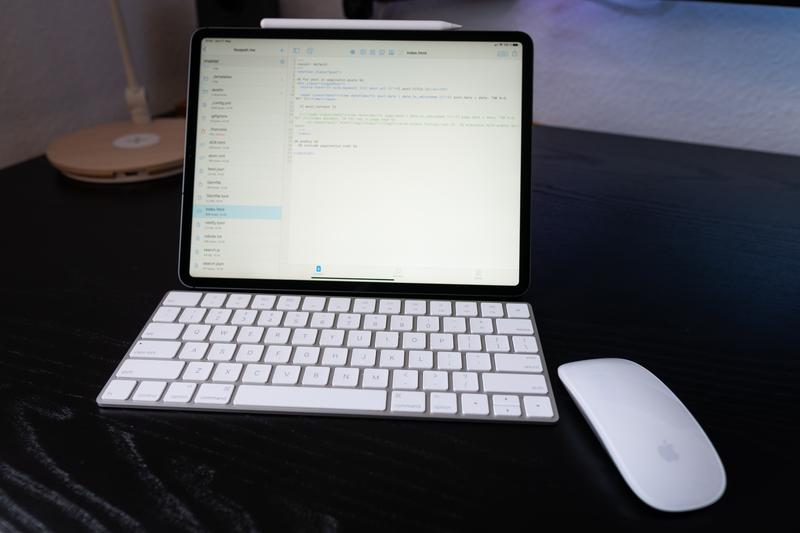A better iPad input solution
 My current iPad input solution: Magic Keyboard & Magic Mouse (2nd Gen.) and the Apple Pencil
My current iPad input solution: Magic Keyboard & Magic Mouse (2nd Gen.) and the Apple Pencil
The last few months have been good for iPad users. At WWDC 2019, Apple announced an iOS fork for their tablet computer, unsurprisingly called “iPadOS”. They also announced substantial changes in the way apps and the operating system itself could interact with third party storage: suddenly USB mass storage devices could be connected to the iPad without much hassle, and apps could import photos directly from the camera without routing through Photos.app. Safari finally had a “desktop” browsing experience. And to top it off, there was a new accessibility option: basic pointer device support–-a forshadowing of a more substantial rethinking of input methods in iOS.
As it turned out, iPad users did not have to wait very long for that rethinking to happen. In an (for Apple, at least) unprecedented move, in March 2020 they announced not just a new accessory–the Magic Keyboard for iPad–but full pointer support for the whole OS. Nobody saw that coming.
It seems obvious that the iPad Magic Keyboard would be the perfect accessory for me. It provides both a good keyboard as well as a pointing device. At a price point of 399 Euros, however, I did not want to buy one immediatly. After reading a lot of reviews, and reading many opinions from people actually buying it, it basically came down to this:
- The keyboard is great and the integration with the iPad hardware and iOS is excellent
- The keys with backlight are a nice touch
- It is surprisingly heavy (heavier than the iPad itself)
- It should be seen as a keyboard stand more than as a keyboard case
- There are some controversial design choices: there is no escape key, for example, or function keys
- The build quality is hit-and-miss: the outer material seems to be very fragile and quickly leads to deep scratches even from things like bread crumbs. Many report scratches right out of the factory. And after a while, many people claim bubbles forming under the outer material - as if the adhesive was not applied thoroughly. It seems quality control has failed severely when it comes to the Magic Keyboard.
- There are claims that the keyboard is draining the iPad battery quickly
All in all I was not very impressed by these reviews and reports. Given the price point, I expected a much higher quality. This is surprising for an Apple product, which usually has excellent build quality at a high price–the Magic Keyboard seems to have a high price only. And then there is the trackpad. I personally prefer mice over trackpads every time, as I find trackpads to be much harder to use, especially when trying to point precisely. Thankfully, the iPad also supports the Magic Mouse (2nd Gen, the 1st Gen is not fully supported), which has been my primary mouse for over ten years now.
Besides the Magic Mouse, I keep using a Magic Keyboard with my iPad. It is an excellent keyboard: light, easy to carry around (I even bought a small pouch for it), requires charging only every few months or so, and it has things the iPad Magic Keyboard is lacking: an escape key, as well as keys for changing the brightness, media keys and volume control keys.
The only downside to this setup is that I cannot use the iPad like a laptop, for example in bed or on the lap. iPad, keyboard and mouse are separate components which can really only be used on a table together. This is thankfully not an issue for me. Other than that, it is the perfect solution for me: I can keep using a mouse, the keyboard has no real downsides and the iPad is still as flexible as it can be.